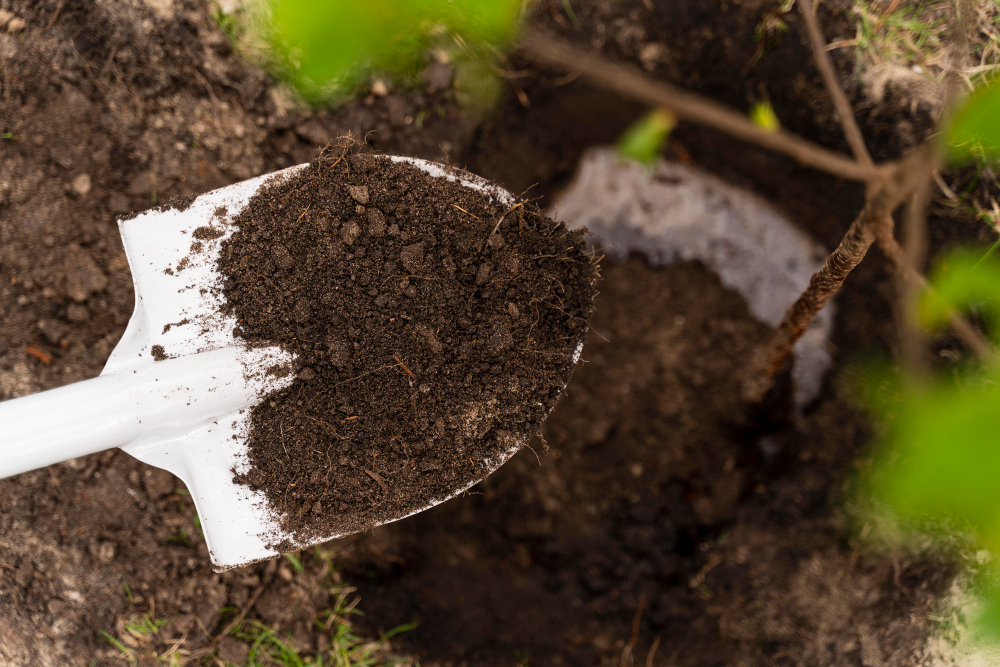Compost and Sod: The Dynamic Duo for a Lush Lawn

You've just laid down your new sod, an act that promises a green, thriving carpet of grass in a matter of weeks. But what happens next? How can you ensure that the investment of your time and money blossoms into a lawn that will have your neighbors green with envy?
The answer lies beneath the surface — in compost. Incorporating compost into your sod installation process can be like giving your lawn the ultimate secret ingredient, that little bit of umami that propels the flavor from good to great. In this comprehensive guide, we'll explore exactly how compost and sod work together, and why they're essential components in your quest for the perfect lawn.
Understanding the Basics of Compost
Compost is a rich, dark, earthy material that's been broken down from organic waste. But it's more than just decayed eggshells and banana peels — good compost is a heady mix of carbon and nitrogen, water and oxygen, time and care. Essentially, compost provides your soil with the necessary ingredients to grow healthy grass by improving its structure, water retention, and overall health.
The magic is in the microbes that compost hosts, such as bacteria and fungi. These microorganisms are what break down the compost into its nutrient-rich form. Without a thriving community of these critters, your soil won't be able to make the most of the organic matter you provide. They not only break down the compost but also act as a defense against the harmful kind, ensuring your lawn isn't crowded out by the wrong kinds of growth.
The Role of Compost in Sod Installation
Sod installation seems simple on the surface — just lay those rolls down and call it a day. But the health of your sod relies on a strong foundation, and that's where compost steps in. Here are a few key ways in which compost can significantly impact your sod installation process:
Enhanced Soil Structure
Compost is like a personal trainer for your soil. It doesn't just nourish; it improves the way soil is laid out. When mixed into your sod's bed, compost helps to create a crumbly, loose, structure that makes it easier for roots to spread and grow. This well-structured soil is less prone to compaction, which can be a problem with sod due to its initial fragility.
Increased Nutrient Density
Building a lawn from sod is like planting an Olympic sprinter — it requires a lot of energy. Compost acts like a sports drink, loaded with the electrolytes that are organic nutrients. By providing more raw materials for the soil's ecosystem, compost encourages deeper and stronger root growth from your newly installed sod.
Water Retention
The spongy structure that compost encourages not only allows air to freely circulate but also retains water. This is especially handy, given that sod can be quite thirsty in those crucial first weeks. Consistent, measured moisture is key to preventing shock in your sod and ensuring it establishes quickly.
Improved Disease Resistance
In a compost-enriched environment, the microorganisms that encourage the growth of your sod are in competition with those that might harm it. Just as a diverse diet can improve your health, a diverse microbial community in your soil can improve the overall resistance of your lawn to disease.
How to Incorporate Compost into Your Sod Installation
Now that we understand the benefits, let's talk about the 'how' of adding compost to your sod installation process. It's essential to get the balance right — too much compost, and your soil could become unbalanced and difficult to work with. Too little, and it won't provide the benefits you're looking for.
As a Top Dressing
One of the simplest ways to add compost is as a topdressing. Once your sod has been laid, spread a layer of compost about a quarter to half an inch thick. As you water your new lawn, these nutrients will work their way down to the roots, providing a balanced release of benefit.
As a Soil Amendment
Mixing compost directly into your soil before laying the sod is a more involved process, but can also provide more benefit in the long run. Aim for a mixture of about 30% compost to 70% soil for the best results. You can do this yourself with a rototiller or garden fork, but it's often best to seek the advice of a professional to ensure you're not overworking the area.
Through a Professional Service
The surest way to know that you're getting the right amount of compost is to hire professional landscapers like From The Ground Up Landscaping. Our skilled team can conduct soil tests, analyze the health of the grass you're hoping to grow, and handle the sod installation process from start to finish, incorporating the perfect amount of compost every step of the way.
A Compost-Enriched Conclusion
For those seeking to achieve true lawn greatness, incorporating compost into your sod installation isn't an option — it's a must. Compost supplies your soil and newly laid sod with the essential nutrients and structure needed to thrive, ensuring that your investment pays off in spades.
Contact From The Ground Up Landscaping today to discuss your sod installation in Orlando, FL. We offer free estimates and the skilled labor necessary to enrich your soil with the fertilizer it needs. With the help of compost, you'll be well on your way to the lawn of your dreams.